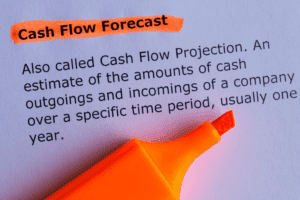Content
- Which Method is Right for You: Completed Contract or Percentage of Completion?
- COMPANY
- Completed Contract Method of Revenue Recognition
- Definition of Completed Contract Method
- Infrastructure Projects, Prevailing Wage and Helping Your Project Achieve Better Outcomes
- Accounting for the Completed Contract Method
- Completed Contract vs. Percentage of Completion Method
- Advantages of a Completed Contract Method

Here are two of the biggest factors construction businesses might want to consider when assessing the completed contract method of accounting. The day of completion for a contract job oftentimes requires extension for a variety of reasons. The completed contract method allows you to delay reporting income and expenses until the job finishes. This accounting method delays the reporting of income and expenses, and can result in tax benefits, depending on the length of the contract. Therefore, during construction progress, Jones Realty doesn’t gain anything from the work done. Under the contract, they pay Build-It periodically for progress completed, but there’s no transfer of control yet. Accordingly, as with the completed contract method, Build-It holds the value of their billings on their balance sheet before they can recognize it on their income statement.

To illustrate the completed contract method, the example below shows a construction project using both the percentage of completion and completed contract methods. The cash flow crunch of the completed contract method is especially tough for new or growing companies that are reinvesting large portions of cash back into their businesses.
Which Method is Right for You: Completed Contract or Percentage of Completion?
On assets, cash decreases by Rp220 in the first year because the company spends it on construction costs. To keep the financial position balanced, the company reports a construction-in-progress account of Rp220. The contract is completed when all parties agree, and the company sends or submits the results to the contractor. The numerator is the amount of construction costs paid or accrued each year the contract was in progress and the denominator is the total of all such construction costs for the project.

For Customer projects usually there is nothing to be capitalized into Asset Accounting in the own books, so I do not see it as a good example for Customer projects. I see that rather as an opportunity to be more detailed on GL account determination in this case to subdivide WIP categories. The RA data is stored in the system by period; therefore it is not possible to have RA postings more than once in the same month. The RA simulation can be done at any time, but only saved data is the basis for respective postings. Total Contract Price $4,000,000 $4,000,000 $4,000,000 Lookback Gross Income $413,793 $1,655,172 Lookback Expenses $300,000 $1,200,000 Note that because income must be claimed for the 1st year, deductions of actual expenses must also be claimed. Therefore, in the 2nd year, the amount claimed in the 1st year must be subtracted from the amount originally claimed of $1,500,000.
COMPANY
Learning more about this method can be a good way for you to understand its benefits and determine whether it’s suitable for your projects. He has obtained the following information via a contract with a company.

The completed contract method is a rule for recording both income and expenses from a project only once the entire project is complete. This contrasts with the percentage-of-completion method , which recognizes a portion of revenue as the contractor completes the contract. Let’s say you are a contractor that has a $10,000 contract with 50% completion. You would recognize $5,000 of revenue under the percentage of completion method. Under the completed contract method, you would only recognize $2,500 of revenue since you have only completed 50% of the project. The completed contract method is an accounting technique used to report revenue from long-term contracts. Under this method, contractors recognize revenue once all deliverables specified in the contract have been completed and delivered to the customer.
Completed Contract Method of Revenue Recognition
If a business is working with a small budget and doesn’t want taxes to interfere with its operating costs, the completed contract method provides an attractive solution. Finally, when assessing and choosing revenue recognition methods, contractors should consult with their construction-specific CPA. Because income and expenses hit all at once, income statements become less useful in the short term and can show major, sudden swings. Additionally, the IRS has several restrictions for when a contractor can use it. Completed-contract-method projects also must be completed under a specified timeframe. The completed contract method should be used when contracts have multiple deliverables and it is difficult to determine the amount of revenue that will be recognized under the percentage of completion method. The completed-contract method will not reflect your yearly revenues, profits, or expenses in the period they’re incurred or earned.
In either event, the $4,000,000 bonus is not includible in the estimated total contract price as of December 31, 2001, because C is unable to reasonably predict that the satellite will successfully perform its mission for five years. Let’s say the company opts to account for the contract received by it as per the completed contract method. Then it has to compile all costs on the balance sheet for the project before completing the contract. And then bill the entire fee from a customer in the income statement once the underlying contract is completed. A contract thus is assumed as completed once the remaining costs and the risks of the project are insignificant. The roller-coaster of the completed contract method is why some small contractors report their long-term contracts on the percentage of completion method.
Definition of Completed Contract Method
To make sure tax strategy aligns with business and personal goals, it is vital for contractors to explore their reporting options. Delaying the payment of income taxes is a common tool used by contractors to improve cash flow. In December 2017, The Tax Cuts and Jobs Act raised the percentage of completion requirement threshold for long-term contract reporting from $10 million to $25 million. The IRS defines a long-term contract as any contract for the manufacture, building, installation or construction of property if such contract is not completed in the taxable year in which such contract is entered. Identifying the best accounting method to report your income and expenses is not always an easy task. Many rules and regulations apply and making the incorrect choice can negatively impact your business.
Does GAAP allow completed contract method?
Under U.S. generally accepted accounting principles, the PCM is the preferred method for contract accounting, and GAAP places a number of conditions and restrictions upon its use. GAAP also allows the completed contract method, in which a contractor don't recognize expenses or revenues until the contract is finished.
In this article, we discuss what the Completed Contract Method is, describe how it differs from other accounting methods, compare its advantages and disadvantages and provide an example of it. It may happen that the contract is completed in the 2nd year, but the contractor already receives all the money & the tax is higher due to higher profits.
Infrastructure Projects, Prevailing Wage and Helping Your Project Achieve Better Outcomes
While this approach to accounting offers strong incentives to businesses, there are a few drawbacks. A company that uses this method can delay the tax payments on its income, but it also delays expense recognition. Expense recognition may reduce the amount of taxes https://www.bookstime.com/ a company needs to pay, so it might not be in the best interest of the business to wait to report these amounts. If the company can record its expenses during the project’s lifetime, it might actually save money on taxes and have more money in its budget.
The completed contract method has certain advantages for some contractors. If a project won’t be completed until the following year, the company won’t have to pay tax on that revenue this year. Additionally, the completed contract method is designed to prevent contractors from accidentally recording “phantom revenue” on more unpredictable projects — that is, earned income they thought they would get but may not end up collecting. For instance, a construction company builds a project on its land, aiming to sell to a customer once the project is completed. Using the completed contract of revenue recognition, the construction firm owns all costs until the project is transferred to its customer upon completion.
To recognize the costs of the contract, they’ll credit Construction in Progress and debit their expenses. The advantages of the completed contract method are that it allows businesses to defer revenue and tax obligations until payment is assured. The completed contract method can be used by any business that enters long-term contracts. This includes construction companies, engineering firms, and software companies. A bonus of using the completed contract method of accounting is that error estimation is not necessary. The radical balance sheet and financial statement fluctuations experienced from the surge of contracts finishing simultaneously is one downside of the completed contract method.
What are the 5 steps in the revenue recognition process?
- Step 1 – Identify the Contract. In previous standards this was pretty straight forward.
- Step 2 – Identify Performance Obligations.
- Step 3 – Determine the Transaction Price.
- Step 4 – Allocate the Transaction Price.
- Step 5 – Recognize Revenue.
This post covers the certified payroll requirements for contractors working on federal construction projects. I’m a subcontractor, I completed all the flatwork for a new construction home. I have done multiple projects for the General over the last 3 years without any problems.
The FASB Concept Statement No. 5 states that companies cannot recognize revenues as being earned until they are realized or realizable, and the company has substantially completed what it needs to do in order to be entitled to payment. Revenue can be recognized at the point of sale, before, and after delivery, or as part of a special sales transaction.
Recording losses at once represents the most conservative form of accounting, ensuring that financial statement users are aware of problems as soon as they arise. ABC Construction Company has received the contract to build a storage capacity for MNC Ltd. The project needs to be finished within a certain time frame, as the company doesn’t have any storage capacity to keep the products and meet the demand. The ABC Construction Company has a deadline to complete the entire project within four months, and for that, they have decided to opt for the completed contract method. It is a method of revenue recognition that suggests accounting for revenue once the project is completed.
Write the journal entries for the completed contract method
See paragraph of this section for rules relating to the application of section 751 to the transfer of an interest in a partnership holding a contract accounted for under a long-term contract method of accounting. Because the distribution of a contract accounted for under a long-term contract method of accounting is the distribution of an unrealized receivable, section 751 may apply to the distribution. A partnership that distributes a contract accounted for under a long-term contract method of accounting must apply paragraph of this section before applying the rules of section 751 to the distribution. If a contractor falls under this exception, they can opt out and use the contract completion method. Contractors tend to favor this method when the actual contract costs are hard to estimate, the project is short, or the company has a number of ongoing projects that contracts are finished regularly each year.
- Compared to the completion method’s percentage, higher net income is generally reported in the completed contract method.
- Except as provided in paragraph of this section, this paragraph is applicable for transactions on or after May 15, 2002.
- Although the cash method might be straightforward, it can delay recording revenue and expenses until the money is earned or paid out.
- In addition to the completed contract method, another way to recognize revenue for a long-term contract is the percentage of completion method.
The advantage is either credited back to the company after paying its regular taxation amount or deducted when paying the tax liability in the first place. If the company is expecting a loss on the contract, it is to be recognized when such expectation arises.




